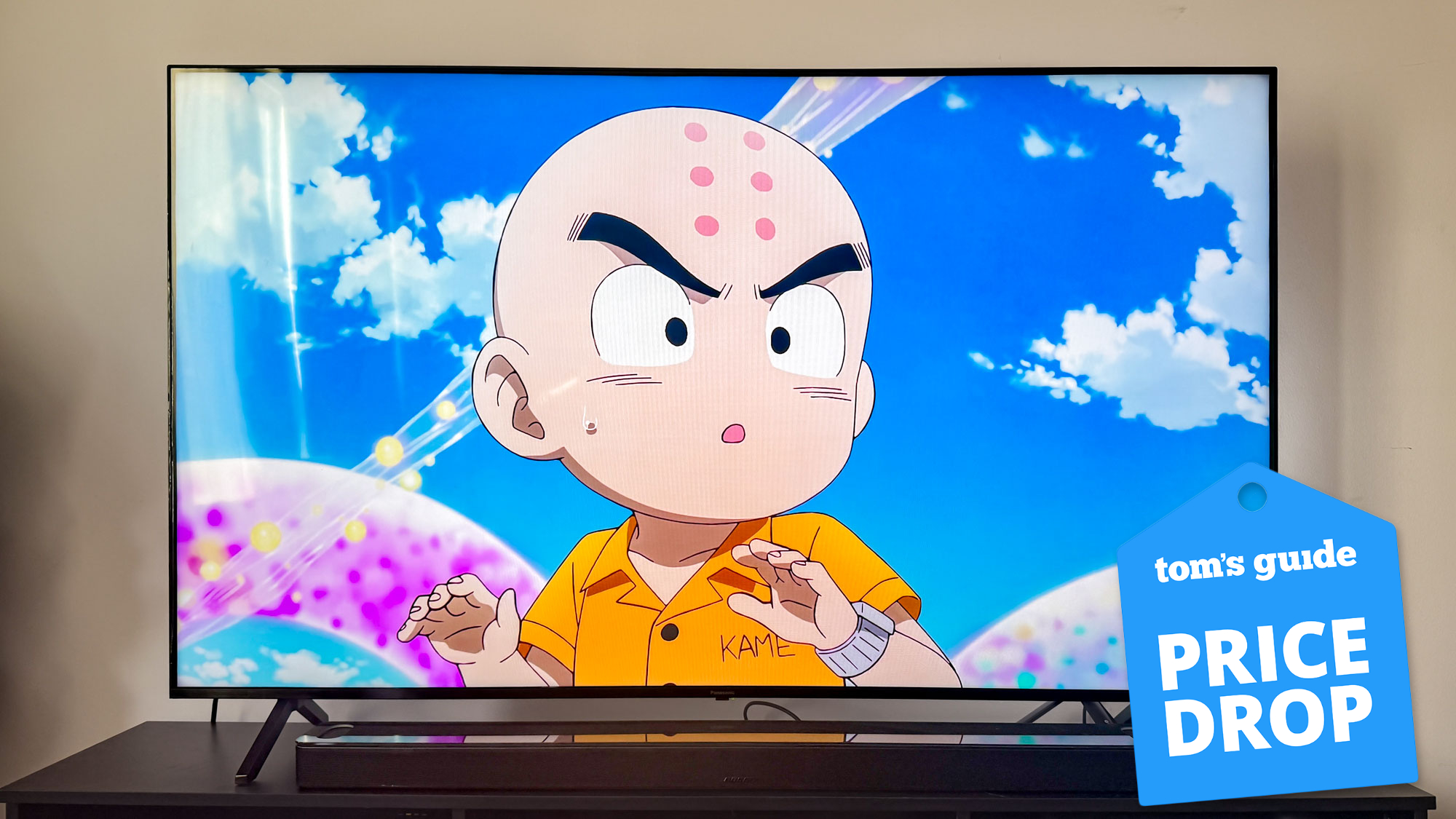Tom's Guide Verdict
The Vivofit 3, the latest version of Garmin's low-end fitness tracker, stacks up well against the competition.
Pros
- +
Long battery life
- +
Simple interface
- +
Garmin Connect app
Cons
- -
Uncomfortable band
- -
Not as accurate when tracking running
Why you can trust Tom's Guide
The variety of entry-level fitness trackers is growing as device makers aim to reach not just fitness fanatics, but people who want to track their daily activity to improve their health. The latest version of Garmin's budget-priced fitness tracker, the Vivofit 3 ($99), offers more activity tracking features than the new Misfit Shine 2 and the Fitbit Charge, such as steps needed to reach your daily goal. However, its wristband could be more comfortable.
Design
The Garmin Vivofit 3 consists of the module for the device itself and a single, flexible strap with a clasp at one end. It looks like a fitness tracker, not a watch, without being as minimalist as the Shine 2. Its small display can show only one metric at once — the time and the date are separate screens — but the screen is visible in direct sunlight, which isn't the case with the Shine 2.

Bands come in black, white and camouflage for the regular size, and black for the extra-large version. If you want to put the Vivofit 3 in a custom band or a waistband clip, the Vivofit 3 module pops out of the band. Both the band and module are water-resistant to 165 feet, so you can wear the Vivofit 3 swimming and don't need to remove it when showering.
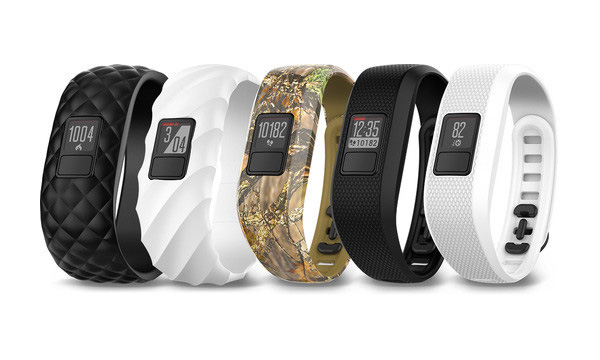
The Vivofit 3 module and band weigh 0.92 ounces, which is not much lighter than Garmin's higher-end fitness tracker, the $149 Vivosmart HR, which weighs a little more than 1 ounce. The Vivofit is about 0.47 inches thick, which is about the same as the Vivosmart HR. This is thick for an activity tracker without a heart-rate monitor, and the device often got caught on my sleeves when I took off my coat. By comparison, the Shine 2 is a feather-like 0.29 ounces, and just 0.31 inches thick.

I found the band uncomfortable. When you fasten the clasp, the extra part of the band feeds under the band — and against your wrist — and not over the band. The back of the clasp also presses against your wrist; the first day I wore the Vivofit 3, it didn't take long to get a mark on my wrist and start sweating behind the band. Loosening the clasp only makes the Vivofit 3 slide up and down your wrist. Because the device is a single strap, there isn't a loop to tuck the excess band into.

All told, I wore the Garmin Vivofit 3 for about two weeks, and it just never felt right.
Setup
The Garmin Vivofit 3 uses a coin cell battery, which the company says will last more than one year. As a result, you can take the device out of the box and set it up without charging it first.
Get instant access to breaking news, the hottest reviews, great deals and helpful tips.
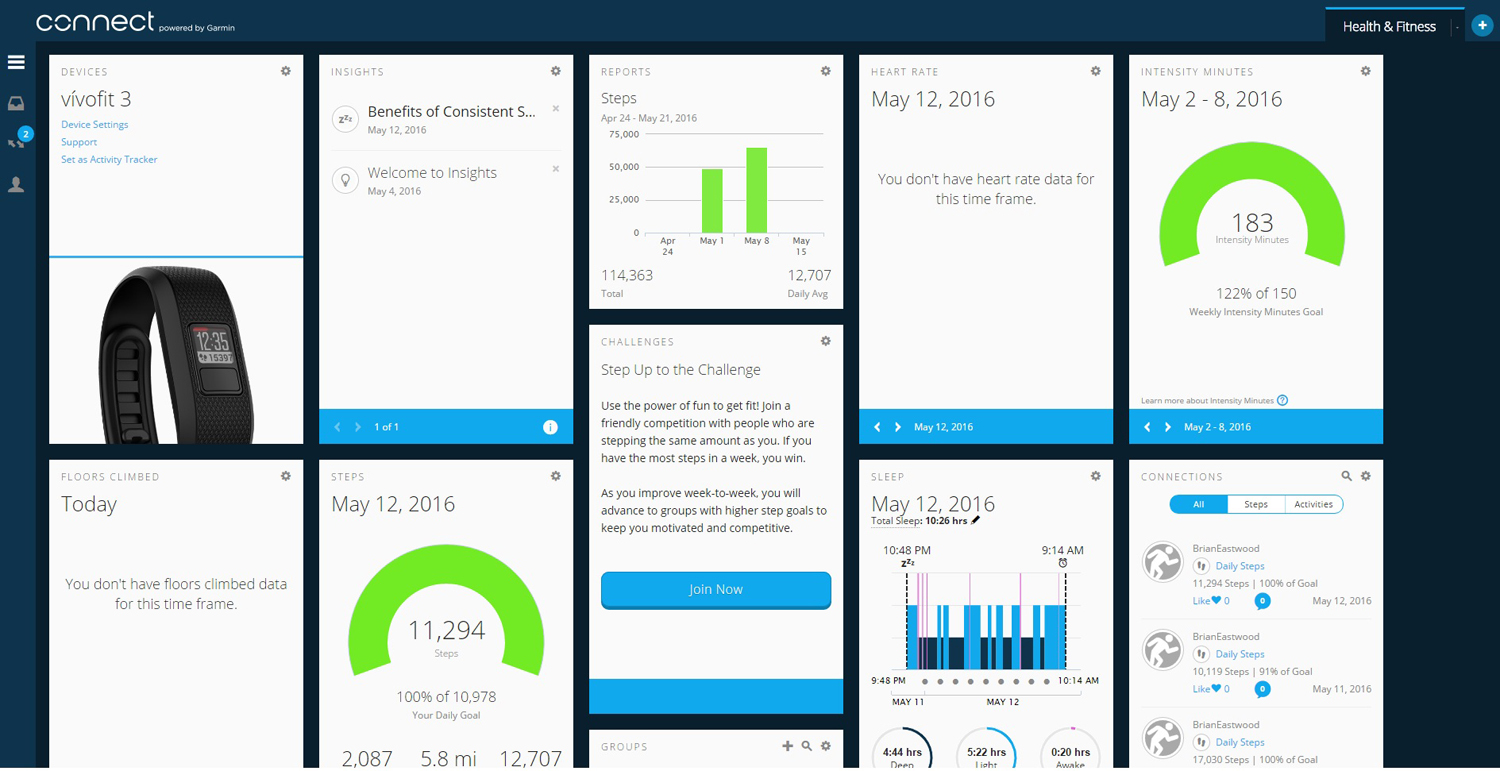
You do need to set up a Garmin Connect account, but that's not difficult: Just plug in your email address, birthdate, normal activity level, height and weight. You can do this on your iOS or Android phone (I used a Samsung Galaxy S5) or your computer; personally, I found the smartphone setup easier.
From there, the Garmin Connect app walks you through the rest of the setup process. Press and hold the button on the Garmin Vivofit 3 until it says "Pair." Then, release the button. If the four-digit code on the phone matches the code displayed on the device, your phone will pair them. Pairing took less than a minute. After that, you're good to go.
All told, I wore the Garmin Vivofit 3 for about two weeks, and it just never felt right.
If you already have a Garmin Connect account, and an old Garmin device synced to your account, make sure you set the Vivofit 3 as your new, default device for Garmin Connect before you start using it. I forgot to do this, and as a result, the Vivofit 3 did not register the 4,000 steps I took on my walk to work the first morning I wore the device.
MORE: Best Fitness Trackers for Running, Swimming and Training
Display and Use
The Garmin Vivofit 3 has a simple interface with a 64 x 64-pixel screen and a single button. Press the button to scroll among the seven screens: Time, Date, Steps Taken, Steps to Goal, Distance Traveled, Calories Burned, and Weekly Active Minutes. This is more information than the Misfit Shine 2 and the Fitbit Charge display, though the Charge also shows floors climbed.
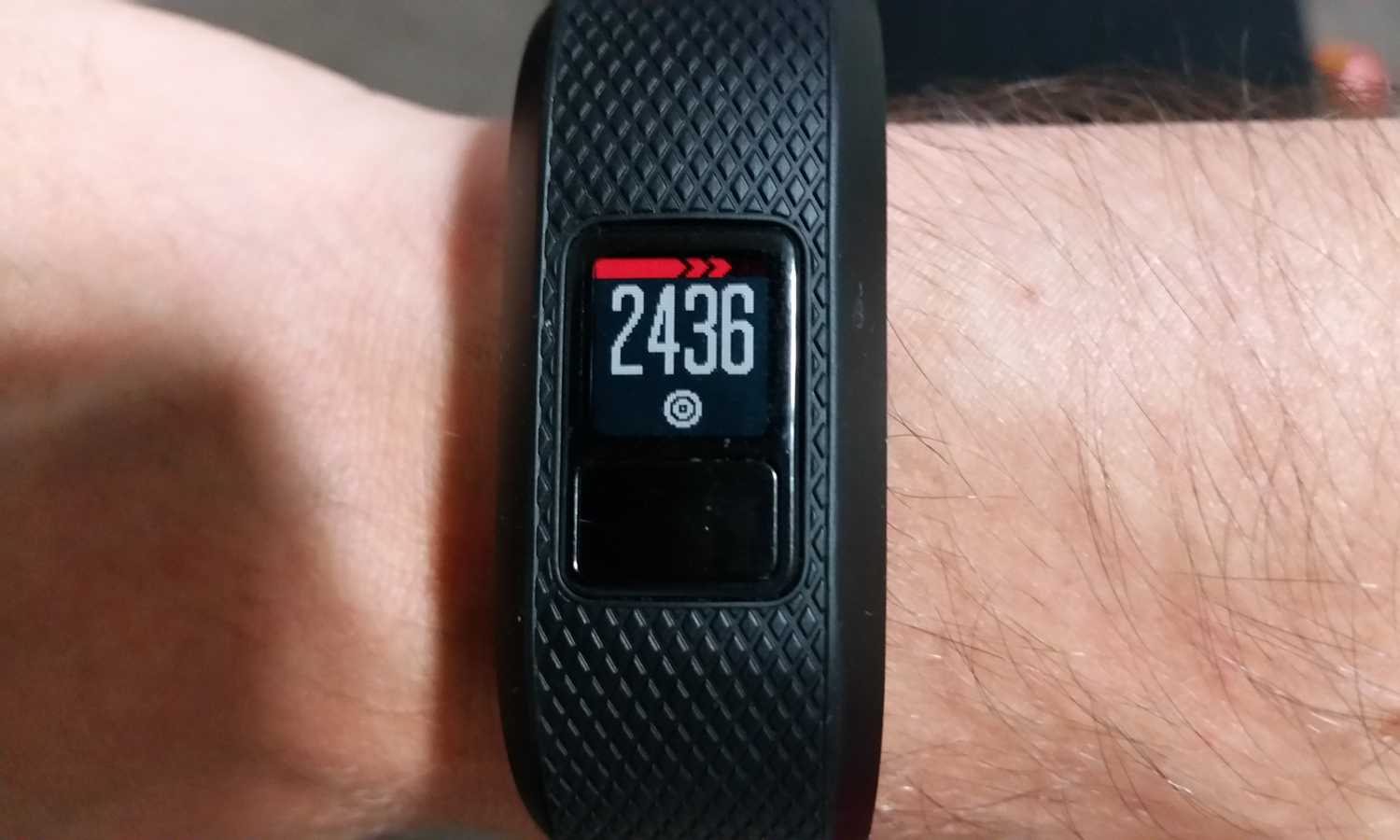
With the exception of the time, a small icon accompanies the numbers on each screen — feet for steps taken, a flame for calories burned and so on. Press and hold the button to scroll through the screens for the active minutes timer, device sync via Bluetooth, device pair via Wi-Fi, and the About screen.
Activity Tracking
By default, the Garmin Vivofit 3 sets your initial daily step goal at 10,000, though you can change this using Garmin Connect. Garmin will adjust this goal up or down based on your daily step total; if you consistently exceed 10,000 steps, for example, your goal will increase.
The Vivofit 3 will also tell you how many steps you need to take to reach your goal — a unique and useful feature among the watches and fitness trackers I've worn. When you hit your step goal, the device beeps, and the screen displays the word "Goal" and a pair of feet. If you hit your goal on consecutive days, you see a short animation of a calendar page turning.
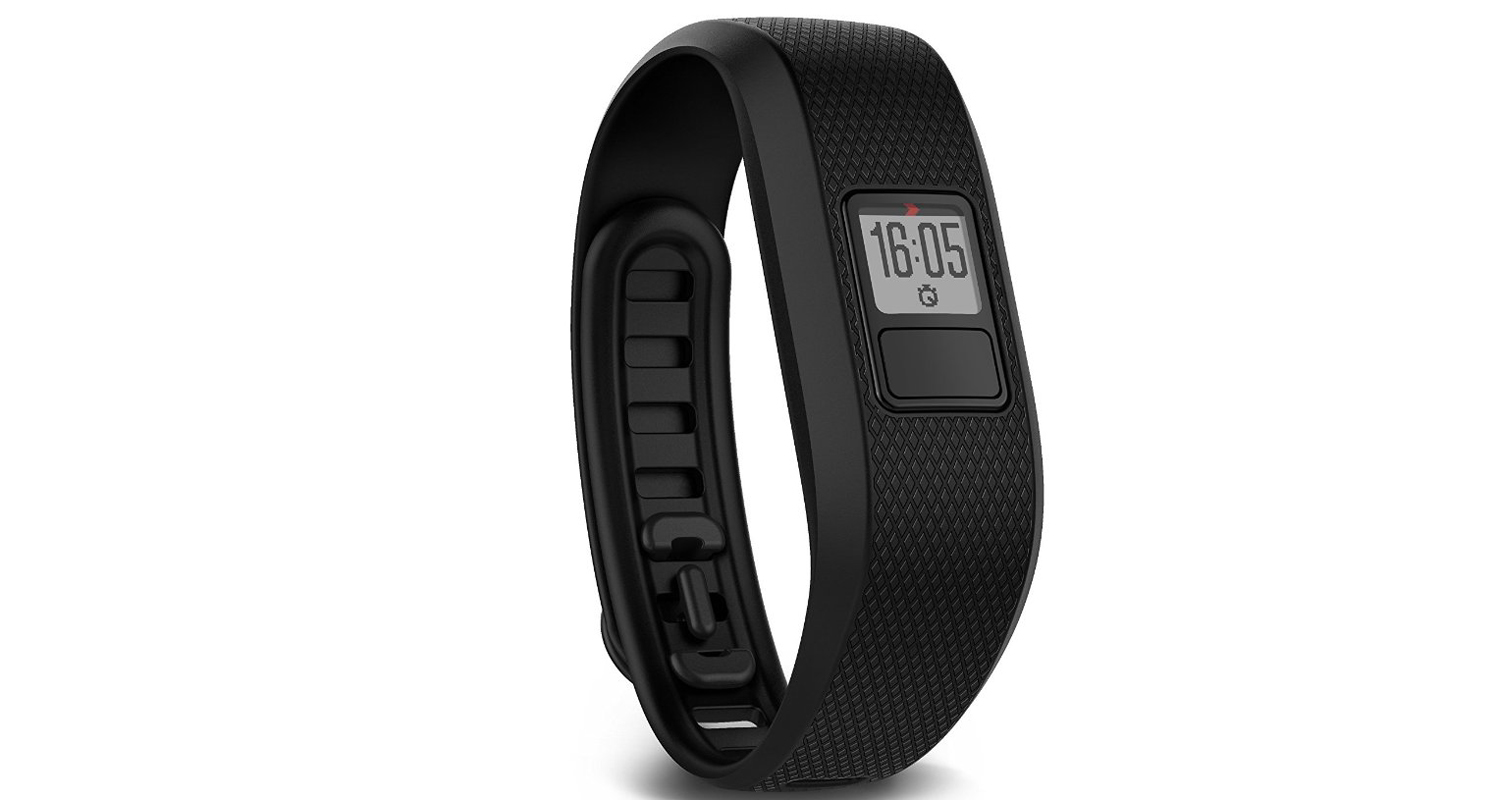
As with other Garmin devices, the Vivofit 3 display includes a Move bar. The red bar fills halfway if you don't move for 1 hour, and then blinks; the device also beeps, though not very loudly. (My co-worker didn't notice it.) The Move bar continues to fill up for each additional 15 minutes that you don't move, beeping and blinking again at the 2-hour mark. Walking for a couple of minutes will clear the Move bar.
Finally, the Vivofit 3 will track overall sleep, restful sleep and periods of movement in the middle of the night. This data was a bit off, as it seemed to count time sitting on the couch or relaxing in bed as "sleep." According to Garmin Connect, I slept 11 hours one night and 10:26 the next night, when, in actuality, I slept a lot less than that.
The Vivofit 3 doesn't come with a heart-rate monitor, but you can sync the device with ANT+ devices and view that data in Garmin Connect.
Accuracy
The step counter on the Garmin Vivofit 3 is quite accurate, counting 500 steps on my walk to work as 503. Still, most trackers are equally accurate when it comes to step counts. The Vivofit 3 also uses what Garmin calls Move IQ technology to detect different types of activity — walking, running, biking and so on — and then capture "active minutes." In Garmin Connect, a brisk walk counts as one active minute, while a run counts as two.
This detection is helpful, because it means the device will automatically track activity without the need to start the timer. It would be more helpful, though, if the active-minute and mileage-tracking features on the Vivofit 3 were accurate. In my experience, they were not.
On three runs in particular, the Vivofit 3 was off. One 49-minute run measured on my watch registered as only 44 active minutes on the Vivofit 3, while a 36-minute run registered as only 21 active minutes. I paused my watch while stopped at intersections, and I didn't stop for very long, so I honestly don't know where the discrepancy came from.
On another run, my watch measured a distance of 7.13 miles, which was confirmed by Gmap Pedometer, but the Vivofit 3 measured only 6.5 miles. The Vivofit 3 uses user profile data and stride length to calculate distance, so I didn't expect it to be as accurate as my GPS-enabled watched, but I was surprised to see a difference of more than half a mile for a 7-mile run.
The Vivofit 3 will tell you how many steps you need to take to reach your goal — a unique and useful feature.
On top of all that, the active-minute timer on the Vivofit 3 doesn't have a pause feature; you can only start the timer or stop it. While the Vivofit 3 is a basic fitness tracker, and this function is the same on the Fitbit Charge (and not available at all on the Misfit Shine 2), it would be nice to be able to pause the timer.
MORE: Fitness Tracker Buying Guide
App
The Garmin Connect app is among the best in the fitness tracking industry, but it takes time to get used to the layers of menus. On the phone, the app provides a quick glance at the number of steps taken, hours of sleep, active minutes, and calories burned during active minutes. You can swipe right to view more in-depth data about steps, sleep, specific activities and your Garmin Connect friends.
You can't track your diet through Garmin's app, but you can link it to MapMyFitness, which offers that feature.
In the browser, you see all of this information at once, in a number of side-by-side modules. If you don't want to see everything, it's easy to go into Settings and remove the modules.
Bottom Line
The Garmin Vivofit 3 occupies an interesting place among entry-level fitness trackers. It tracks more information than the Misfit Shine 2 or the Misfit Shine 2, and it's easier to view this information on the Vivofit 3 than on similar devices. But that information isn't always accurate, and the device is also less comfortable.
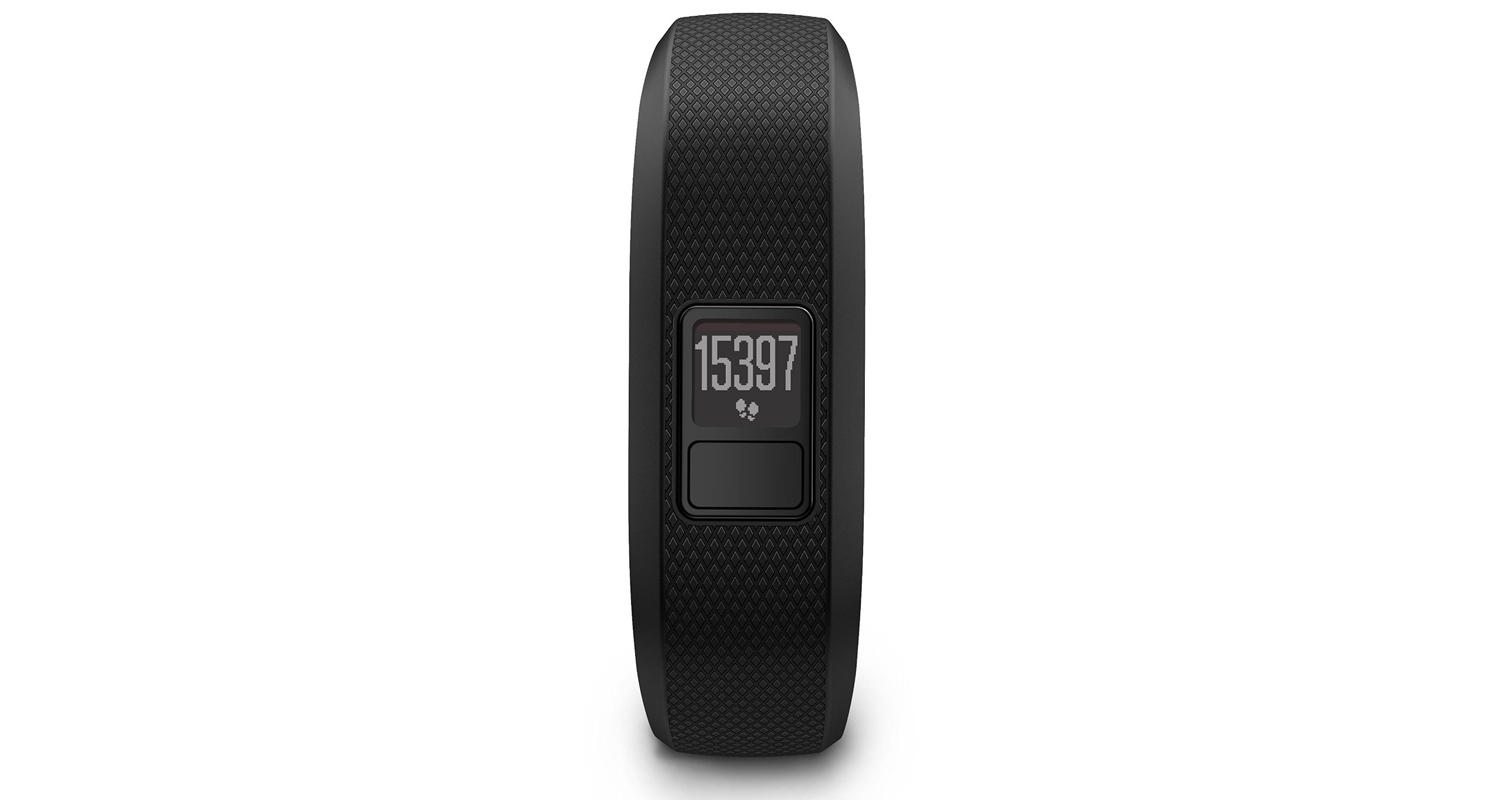
If you want a device primarily for running, the $99 Garmin Forerunner 15 and the $139 Forerunner 25 are good options. Both have built-in GPS, which will track your distance more precisely. Ultimately, the Vivofit 3 is worth buying if you want a basic fitness tracker and the top-notch Garmin Connect experience.

Brian Eastwood is a freelance writer for Tom’s Guide, focusing primarily on running watches and other wearable tech. Brian has been a professional writer and editor since 2003. He has covered healthcare tech, enterprise tech, higher education, and corporate leadership for a range of trade publications. Brian is a lifelong Massachusetts native and currently lives outside of Boston. Outside of work, he enjoys running, hiking, cross-country skiing, and curling up with a good history book.
